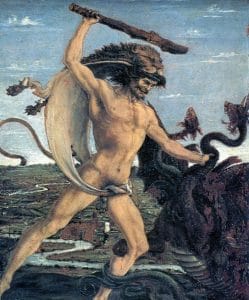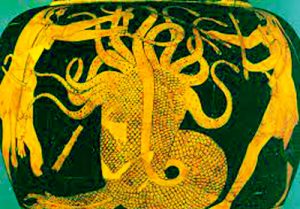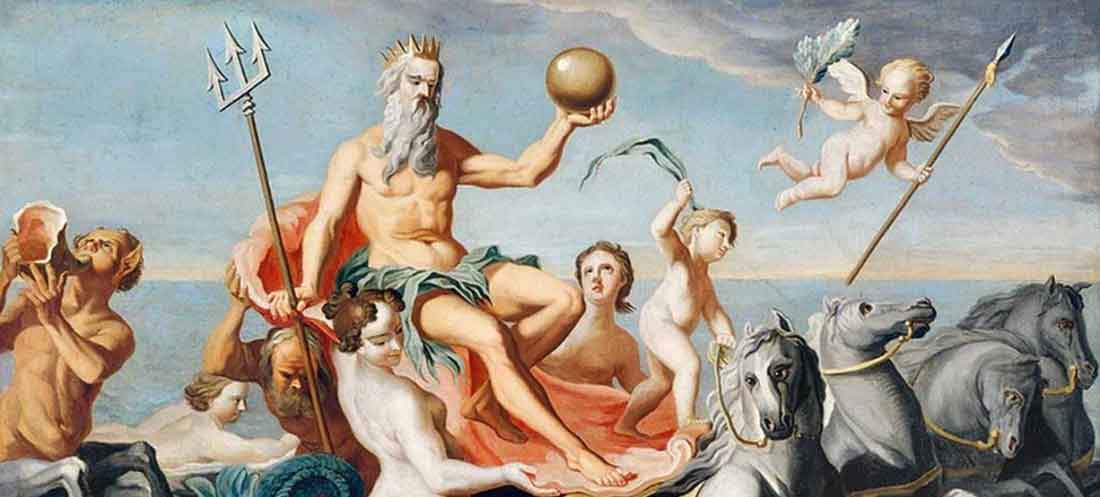Heracles and the Lernaean Hydra

In Hellenistic times it was said that the central head was female, from which snakes sprouted instead of hair, as in the head of Medusa. Her breathing was deadly even when she was asleep, wreaking havoc on the country’s crops and herds.
Heracles boarded a chariot driven by Iolaus and reached Lerna. Then he stopped the horses and found the water snake on a hill near the springs of Amymoni river, where her nest was, and striking her with a fiery arrows, he compelled her to come out of the nest. When she came out, he caught her and held her tight.
She wrapped around one of his legs and immobilized him. Heracles, although had cut off her heads with his bat (or with a curved sword), could not exterminate her because, when he cut off one head, two sprouted in its place. Hydra was assisted by a giant crayfish that bit his foot in the heel. So, first he killed the crayfish and then he asked for the help of Iolaus, who burned part of the nearby forest and scorching with torches the points from which the heads sprouted, did not let any more heads to come out.

With the blood of Hydra, Heracles poisoned his arrows. When he injured the Centaur Chiron with them, the centaur washed his wound in the waters of the river Anigros, which springs from the Arcadian mountain of Lapithos, and since then a bad smell emerges from there, nor are the fishes of this river suitable for eating.
This poison was one of the components of the so-called love filter that Nessos revealed to Dianeira — it was made from the blood infected with Chiron’s wound, so instead of rekindling Heracles’ love for Dianeira, it eventually caused his death.
Hera, who herself had raised Hydra under a plane tree near the source of Amymoni, placed her, like her accomplice crayfish, in the sky as a constellation.
Another rational interpretation of the myth, wants Lernos (the king of the area named by him) did not recognize the primacy of Eurystheus in the wider region which included, apart from Lern, cities such as Argos, Mycenae, Tyrrhenia, each with its own king.
Thus, he was in constant war readiness, mainly in a small fortified settlement on the border of his country, called Hydra and he was guarded day and night by fifty brave archers. Eurystheus sent Heracles to capture him and for each archer killed by the Heracles, King Lernos put two in his place, so that together the two could equal the bravery of one.
Risking defeat, Lernos hired Kares mercenaries. Heracles’ nephew Iolaus came to the aid of him with Theban soldiers. Together they managed to set fire to the tower of Hydra and kill the soldiers. together they managed to set fire to the tower of Hydra and kill the soldiers.
That’s how things turned out but some turned Hydra into a snake and they composed the corresponding myth. Still others believe that Heracles carried out a technical task: he drained the swamp of Lerna lake. The imagination of poets presented it as a monster with many heads, but in reality they were springs whose waters found a way out into the lake.
